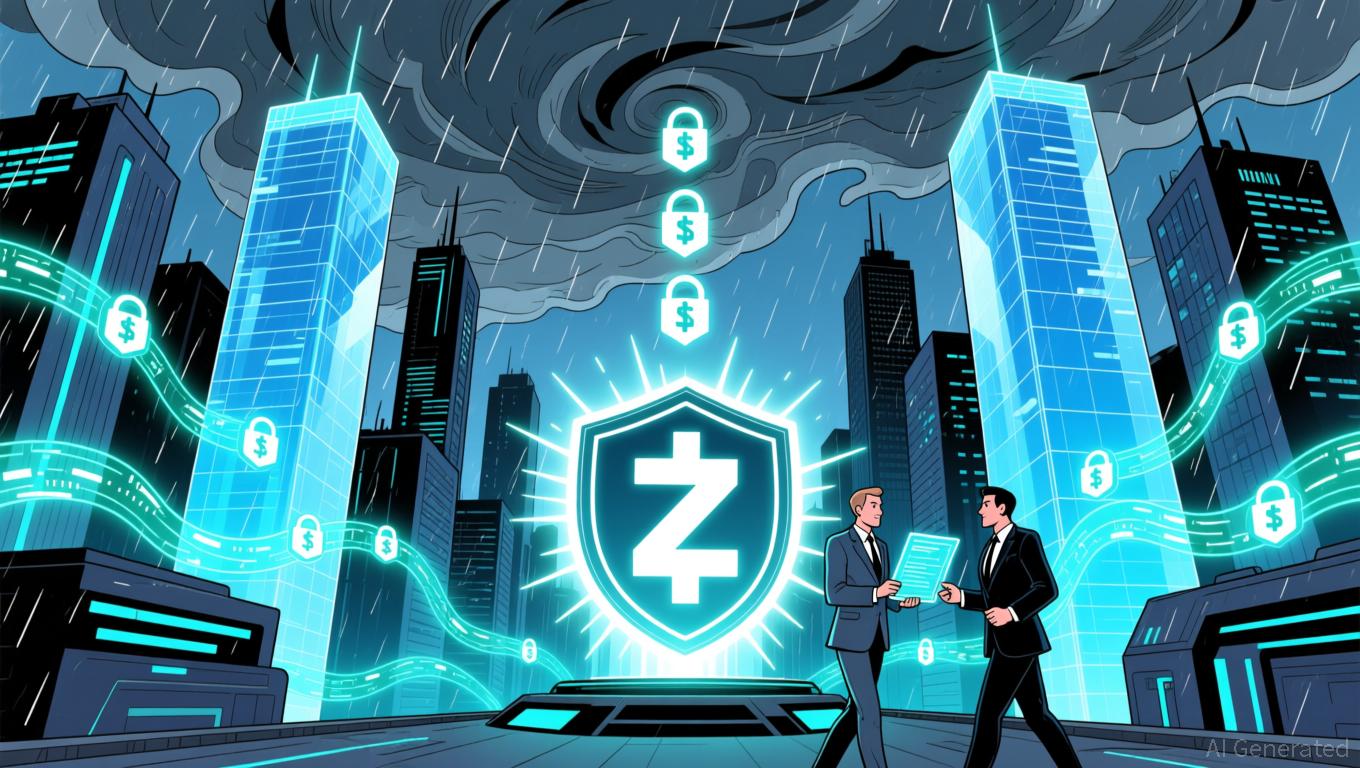Heading Towards 2026: Top Blockchain Companies to Watch According to VanEck
Taking Stock of Key Long-Term Leaders in the Blockchain Industry
Original Author: Drew Anderson, VanEck
Original Title: Top Blockchain Companies to Watch Leading into 2026
Original Translation: Lüdòng Xiǎogōng, BlockBeats
Key Points:
- Leaders in the blockchain industry are no longer limited to a single field but are spread across mining, fintech, energy, and even semiconductor industries.
- Major companies like Coinbase, Nvidia, and Block are fully committed to driving the real-world application of blockchain technology.
- As we move towards 2026, asset tokenization, stablecoins, and on-chain settlement are fundamentally reshaping the capital markets.
What is Blockchain? Why is It Important to the Crypto Space?
Blockchain is essentially a decentralized digital ledger that records transactions via a computer network, ensuring transparency, security, and immutability without the need for a centralized authority. Each "block" on the chain contains a set of validated transactions that, once added, cannot be altered—creating a trusted, tamper-proof record.
This technology is the cornerstone of all cryptocurrencies, enabling peer-to-peer value transfer, smart contracts, and decentralized applications (DApps). By eliminating intermediaries and reducing fraud risks, blockchain has become a key enabler of crypto-economic growth and trust-building.
As blockchain technology matures and integrates into the mainstream financial system, the "on-chain economy" is rapidly evolving. Against this backdrop, a growing ecosystem of companies and investment tools is driving this transformation: they are building infrastructure to support digital assets, expanding access to tokenized markets, and creating new investment channels for blockchain innovation. These leaders are not only shaping the future of decentralized finance (DeFi) but also redefining how value is created, exchanged, and protected in the global economy.
Top Blockchain Companies to Watch
The on-chain economy spans multiple industries, each playing a unique role in supporting, expanding, and innovating within the blockchain ecosystem. From digital asset exchanges facilitating transactions to mining firms securing networks, and to fintech companies bridging traditional finance with DeFi, here are various key leaders worth watching as we move towards 2026:
(Note: The NODE mentioned in the article is the on-chain ETF code under VanEck)
Trading Platform
Coinbase Global Inc. (COIN) (holding 2.58% of NODE's assets)
As the largest cryptocurrency exchange platform in the United States, Coinbase is the gateway for millions of investors to access, trade, and custody digital assets. Its institutional-grade services and regulatory leadership continue to make it a cornerstone of the crypto economy.
Robinhood Markets Inc (HOOD) (holding 2.24% of NODE's assets)
Known for "democratizing stock trading," Robinhood has expanded into the crypto space, providing a convenient entry point for retail investors into digital assets. By integrating traditional stocks and cryptocurrencies on the same platform, it is blurring the boundaries between the traditional financial world and the blockchain industry.
Mining
Core Scientific Inc. (CORZ) (holding 3.93% of NODE's assets)
As one of the largest Bitcoin miners in North America, Core Scientific is transcending mere cryptocurrency mining, transforming its infrastructure to support artificial intelligence (AI) and high-performance computing workloads—successfully bridging two of the fastest-growing digital frontiers.
Cipher Mining INC. (CIFR) (holding 6.42% of NODE's assets) & Bitfarms Ltd (BITF) (holding 1.10% of NODE's assets)
These two companies have recently shown impressive performance. With the strengthening of the Bitcoin price and network activity, they represent a strong rebound in the mining industry.
Traditional Finance Enablers and FinTech
Mercadolibre Inc. (MELI) (holding 1.07% of NODE's assets)
Often referred to as the "Latin American Amazon," MercadoLibre has grown into a fintech giant. It has integrated digital payments and crypto services into its e-commerce ecosystem, accelerating financial inclusion across the entire Latin American region.
Asset Management Companies and "Hodlers"
MicroStrategy Inc. (MSTR) (holding 0.24% of NODE's assets)
As the largest corporate holder of Bitcoin, MicroStrategy has transformed from a software company into a de facto Bitcoin investment vehicle. Its treasury strategy highlights a steadfast belief in Bitcoin as a long-term store of value.
Galaxy Digital Inc (GLXY) (comprising 4.35% of NODE holdings)
A diversified digital asset financial services firm, with business lines spanning the transactional, asset management, and investment banking services of the crypto economy, it is a key gateway for institutional investors entering the blockchain market.
Energy Infrastructure
Kinder Morgan Inc. (KMI) (comprising 0.54% of NODE assets)
As a major U.S. natural gas supplier, Kinder Morgan plays an indirect yet crucial role in the crypto economy — providing energy to data centers and mining operations that uphold the blockchain network's functioning.
Exploring Investment Ideas: What Real-World Applications Will Blockchain Have by 2025?
Blockchain is often viewed as a backend technology, but by 2025, it is bringing tangible transformations to fund flows, capital market operations, and institutional liquidity management. The current narrative revolves around tokenization, programmable settlements, and bringing interest-bearing assets onto the chain.
Several typical use cases include:
Cross-Border Payments: Imagine a global merchant needing to pay suppliers in dozens of countries but no longer relying on the SWIFT system and banks. Stripe has rolled out USDC payments in over 50 countries, enabling enterprises to settle instantly using stablecoins, eliminating the delays and high forex costs of traditional methods.
On-Chain Financing: In addition to payments, stablecoins are now used for large-scale collateralization and funding of on-chain lending. Visa's analysis shows that by 2025, monthly lending volumes hit new records, underscoring stablecoins' key role in DeFi money markets as operational capital.
Institutional Settlement: Large banks are also rethinking the underlying infrastructure of finance. JPMorgan's Kinexys platform allows institutions to issue tokenized securities as collateral, circulating between different venues, eliminating the friction costs of traditional settlement.
These examples hint at a broader shift: capital markets are becoming more modular, liquidity more dynamic, and assets are gaining a 'programmable layer.' In this new world, blockchain is no longer an experiment — it is becoming infrastructure.
Disclaimer: The content of this article solely reflects the author's opinion and does not represent the platform in any capacity. This article is not intended to serve as a reference for making investment decisions.
You may also like
Bitcoin News Update: Bonk’s ETP Connects Meme Coins with Mainstream Regulated Markets
- Bonk (BONK) launched a regulated ETP on SIX Swiss Exchange, enabling traditional investors to trade the meme coin via standard brokerage accounts. - Bitcoin Capital's 1:1 BONK-backed ETP leverages Switzerland's regulatory framework to bridge crypto and traditional markets, targeting retail and institutional investors. - The move reflects growing European openness to digital assets, with SIX positioning itself as a crypto innovation hub through regulated meme coin access. - Despite mitigating custody risk

The Unexpected Rise of the HYPE Token and Its Implications for Cryptocurrency Market Mood
- HYPE token surged to $60 in late 2025, driven by Hyperliquid's CLOB model and 73% decentralized perpetuals market share. - Protocol upgrades boosted TVL from $400M to $5B, attracting retail/institutional investors with enhanced liquidity. - Market sentiment remains split: 67% bullish vs. 33% bearish amid technical resistance and $316M token unlock risks. - HYPE's trajectory highlights DeFi's speculative nature, balancing innovation with vulnerabilities like liquidity events.

Zcash News Today: Zcash's Approach to Privacy: Is It a Partner or Rival to Bitcoin in the Changing Crypto Landscape?
- Zcash (ZEC) leads privacy coin resurgence in 2025, generating $47.5M in fees (560% surge) and ranking fourth globally in blockchain fee share. - OKX relisting triggered 12% price jump to $600, fueled by quantum-resistant upgrades, Winklevoss-backed $150M investment, and U.S. regulatory shifts. - Privacy coin debate intensifies: critics warn Zcash could split Bitcoin's institutional support, while proponents highlight its quantum-safe governance and 11,590 daily active wallets. - Emerging rivals like Ghos

Bitcoin Updates Today: 2025 Cloud Mining Surge: Automation and Easy Access Propel Widespread Crypto Adoption
- 2025 cloud mining platforms like WPahash enable free XRP/BTC/DOGE mining via mobile apps, offering $100 bonuses and 16 EH/s hashrate for U.S.-compliant investors. - Swiss platforms leverage AI-optimized mining and renewable energy, with Geo Therm Farm Max delivering 8.8% ROI in two days through 241 TH/s hashrate. - Dogecoin cloud mining surges via Hashj's 28.3 EH/s infrastructure and $118 bonuses, aligning with 2026 green energy expansion goals. - Analysts predict 35% annual growth in cloud mining adopti

